Friday 30 March 2018
Study shows social media echo chambers might actually be a good thing

A group of researchers, as part of a social experiment, paid liberals and conservatives on Twitter to follow a bot for a month that tweeted political views from the other side. Shockingly, rather than softening their own views or learning to understand the opposition, most participants dug in deeper. We’re not partisan out of ignorance, it seems, but because we fundamentally disagree. Social media echo chambers take a lot of grief. There’s a popular perception that people get stuck inside their own biased worlds and become oblivious to the ‘reality’ the opposing side understands. But perhaps they’re actually doing us…
This story continues at The Next Web
from Social Media – The Next Web https://ift.tt/2uyzLct
via IFTTT
Thursday 29 March 2018
Top Facebook exec defended data collection in leaked 2016 memo: ‘Maybe someone dies’
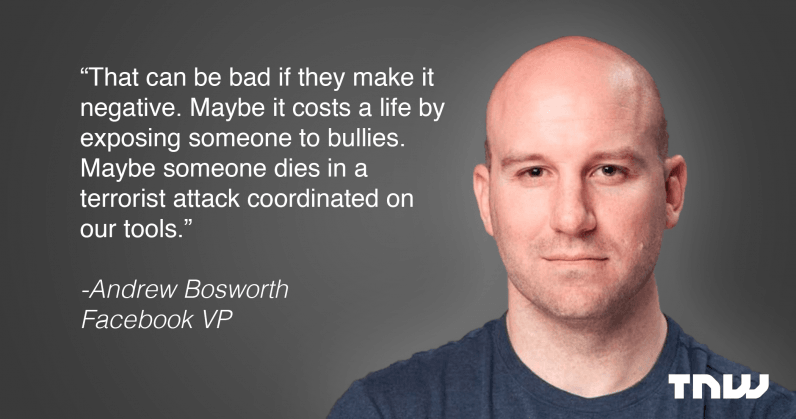
An explosive new memo details one of Mark Zuckerberg’s most trusted executives attempting to justify growing concerns over the company’s data collection methods, and its relentless push to acquire new users. Titled “The Ugly,” the memo has never been circulated outside of Facebook’s offices until today, when Buzzfeed News got its hand on it. The memo, penned by Facebook Vice President Andrew “Boz” Bozworth, attempted to push a narrative where the ends certainly justified the means in regards to doing whatever it takes to ensure future growth, even at the expense of user privacy. The ugly truth is that we…
This story continues at The Next Web
Or just read more coverage about: Facebook
from Social Media – The Next Web https://ift.tt/2pPuyZ1
via IFTTT
US to demand visa applicants turn over social media history

The Trump administration wants to extend its practice of “extreme vetting” to everyone seeking a non-immigrant visa. Instead of specifically discriminating against people traveling from countries it’s declared tied to terrorism, it’ll instead utilize a more evenly distributed form of discrimination against non-Americans. According to documents set to publish in The Federal Register, if you want to come to the US on a non-immigrant visa you’ll have to answer questions about your family’s involvement in terrorist activities. And you will also be required to provide your social media handles, email addresses, and phone numbers going back five years. Opponents of…
This story continues at The Next Web
from Social Media – The Next Web https://ift.tt/2pM3Xfx
via IFTTT
Autoplaying video adverts are coming to LinkedIn
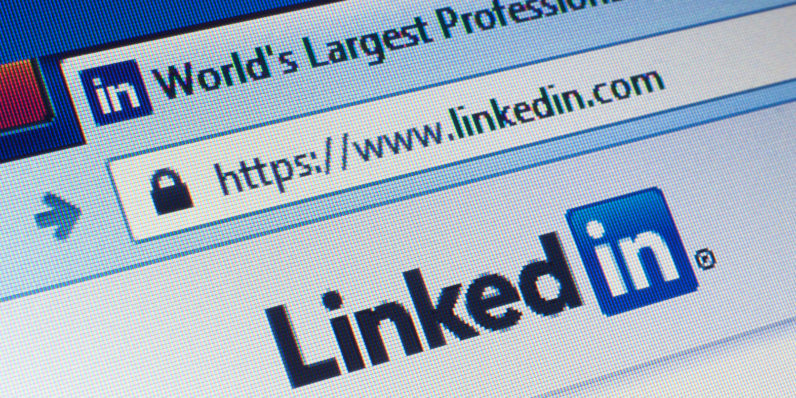
I’m not sure many people will endorse this move from LinkedIn. According to TechCrunch, the Microsoft-owned professional social network (slash blogging service for the world’s least self-aware people) is introducing autoplaying video advertisements. Previously, if an advertiser wanted to use video on LinkedIn, they’d have to link to another service like YouTube or Vimeo. With this change, videos will appear as native, standalone posts in the LinkedIn newsfeed, alongside the usual fare of blog posts, status updates, and job adverts. Mercifully, adverts in this new video format begin muted. Other social networks — most notably Facebook, Twitter, and Instagram —…
This story continues at The Next Web
Or just read more coverage about: LinkedIn
from Social Media – The Next Web https://ift.tt/2GgdSnD
via IFTTT
Wednesday 28 March 2018
The Best Tool to Plan Your Email Marketing Automation

What is an automation map?
An automation map is a visual representation of your automation flow. Just like a map, it can give you direction, and help you plan ahead and avoid missteps as you create an automated series. Email automation can have a lot of moving pieces. Your automation map will help you take all of that into account and plan ahead. Plus, you can build upon your map as you add more emails and complexity to your automation. Here at AWeber, we use automation maps frequently. They help us review the flow and content of simple series and plan every step of complex, branching automation series. By glancing at an automation map, I can quickly see whether or not my email automation leads subscribers all the way through the marketing funnel. I can determine whether or not my series contains dead ends. And I can see if I’m segmenting my audience in the best way possible. Whether you’re just getting started with automation or an expert, an automation map can provide guidance and level up your efforts.How to map your series
Before you start mapping, you should decide what tools you’d like to use to map your series. I recommend either hand drawing your series with a pencil and paper or planning your series out digitally with a tool like Google Draw. Which you choose all depends on your preferences. Once you’ve chosen your preferred tool, you’re ready to map your series. Every automation map is comprised of 4 simple elements:1. The emails in the series
You might have a 4-email automation series or a 20-email automation series. Either way, the goal of the emails within your series is to lead your subscribers through the marketing funnel or persuade them to take a certain action. You can review your automation map to see if your content and emails will accomplish this.2. Time delays between those emails
Whether it’s minutes, hours, days, or weeks, you should include a time delay between nearly every email. Time delays will deliver your emails at the perfect time, rather than all at once. So, what is the perfect time? That depends on your audience and the expectations you set on your sign up form and welcome email. If you’re unsure, survey your audience to ask them what they prefer. Or, test different time delays to see what works best for your audience.3. Tags or labels you’ll use to segment your subscribers
Most email marketing and automation platforms can apply tags or labels to your subscribers when they perform certain actions, receive an email, or subscribe to a list. These tags can help you segment your audience into groups based off their tags. You can then send automated emails to those groups specifically. For example, let’s say you set up your email marketing platform to apply a tag to a subscriber when they click on a survey link in one of your automated emails. You could then resend the survey email to anyone who does not have that tag. That way, you could give non-responders another chance to answer your survey without sending an irrelevant email to those who already responded to your survey.4. The various paths or journeys your subscribers might take
Action-based or behavioral email automation is when you send automated emails to people based off their actions. If you’re using action-based automation in your automated series, your subscribers will go down different paths or journeys depending on what they do. A subscriber who clicks one email may receive another email targeted to them. While a subscriber who opens a different email, may receive a 3-part email series based off that open. Your automation map should outline the different paths your subscriber could possibly take. This way, you can avoid sending too many emails to the same subscriber on the same day. And, you can preview your subscriber’s possible experiences. An automation map becomes extremely important when you start using action-based automation. You might think you have a brilliant idea for an action-based automation series. But, once you map it out, you might discover it would lead to a terrible experience for a particular segment of subscribers –– like getting 3 emails on one day.An automation map in action
To help you see how automation maps work, we’re going to look at an example. Let’s say you’re an author who wants to promote his brand-new novel through automation. You decide to send a chapter every week for four weeks to your subscribers. At the end of the four-week automated campaign, you’ll promote a link to buy your entire novel. If you were hand drawing it, your automation flow might be mapped out something like this: The same automation map created in Google Draw might look like this:
The same automation map created in Google Draw might look like this: 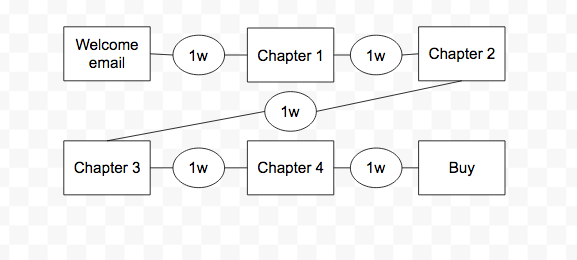 Pretty simple, right? But with this map, you know exactly what your time delays are, and you know exactly which emails will launch and to whom they’ll send. Now, let's say you want to take it a step further with action-based automation. You’ll still offer your novel for purchase after you sends the fourth chapter, but you’ll also ask a question of your audience. Which genre do they prefer? Romance or Thriller. Depending on which option the subscriber clicks on, they are automatically tagged with either "Romance" or "Thriller." You’ve now segmented your audience into two groups, and you can target those segments with his other book titles that fall in those particular genres. You could then send 2 different automated series to those segments. For those who chose “Romance,” you could ask them to buy your new romance book. For those who chose “Thriller,” you can promote your new thriller book. Here’s an example of what your automation map might look like for this action-based series:
Pretty simple, right? But with this map, you know exactly what your time delays are, and you know exactly which emails will launch and to whom they’ll send. Now, let's say you want to take it a step further with action-based automation. You’ll still offer your novel for purchase after you sends the fourth chapter, but you’ll also ask a question of your audience. Which genre do they prefer? Romance or Thriller. Depending on which option the subscriber clicks on, they are automatically tagged with either "Romance" or "Thriller." You’ve now segmented your audience into two groups, and you can target those segments with his other book titles that fall in those particular genres. You could then send 2 different automated series to those segments. For those who chose “Romance,” you could ask them to buy your new romance book. For those who chose “Thriller,” you can promote your new thriller book. Here’s an example of what your automation map might look like for this action-based series: 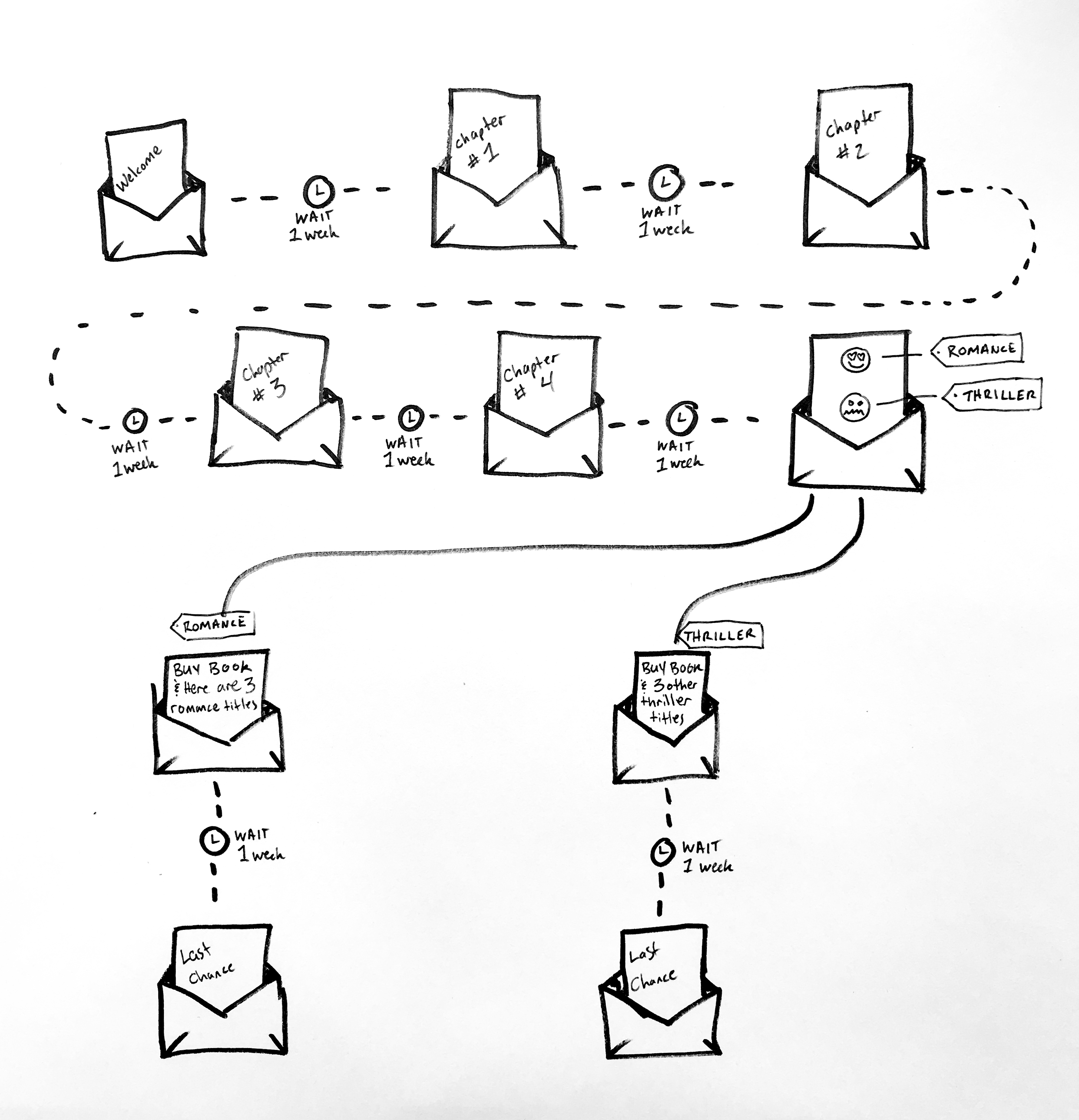 As you map your own series, ask yourself these questions:
As you map your own series, ask yourself these questions:
- Should you apply a tag at the beginning and/or end of your series? (Doing so can help you identify who is currently within a series and who has finished a series.)
- What’s the right time delay between each email? Am I sending too many emails? Am I sending too few?
- Which emails slot into the different stages of the marketing funnel (awareness, consideration, conversion, loyalty, and advocacy)?
- Is there an email I can add to the series that’ll make my user more likely to convert?
Not sure what to write in your automated emails? This free course will help.
Before you can launch an automated series, you need to write your emails. If you have writer’s block or need direction, our free “What to Write in Your Emails” course can help. With over 45 fill-in-the-blank email copy templates, it makes writing as simple as copying and pasting. Enroll in the course today for FREE!The post The Best Tool to Plan Your Email Marketing Automation appeared first on Email Marketing Tips.
from Email Marketing Tips https://ift.tt/2pM40Ih
via IFTTT
Tuesday 27 March 2018
How the ‘Deus Vult’ gaming meme turned far-right

Deus Vult, or ‘God wills it’, arose as the rallying cry of soldiers of the First Crusade. Back in 1095, Pope Urban II requested help for the Eastern Orthodox Church to defend himself from the Seljuk invasion of Anatolia. As such, Deus Vult grew into a historical catchphrase intended to align people into recapturing the Holy Land. Roughly a millennium later, Deus Vult is simultaneously adopted by gamers, 4chan-shitposters, Trump supporters, and protesting Islamophobes. How can one trace these uses of the meme? This article will contextualize these various spheres, and with it, show how Deus Vult ‘mutated’ from a relatively harmless gaming-meme to…
This story continues at The Next Web
from Social Media – The Next Web https://ift.tt/2DZ6kj7
via IFTTT
Monday 26 March 2018
Snapchat’s new Explore feature makes Maps a social experience
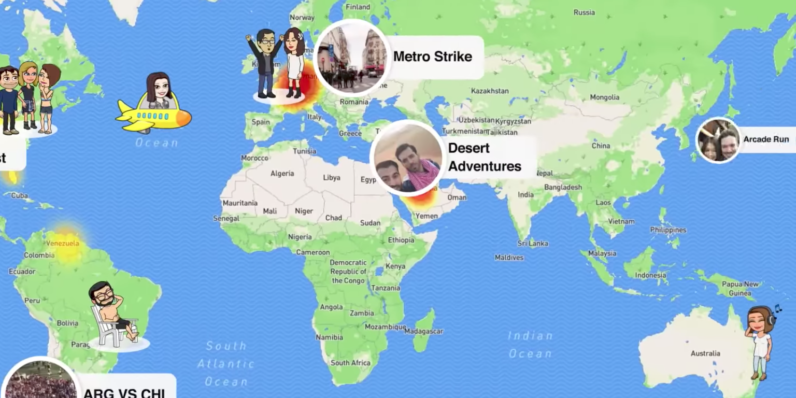
Snapchat recently announced it would be updating Snap Map to bring you notifications of what your friends (and Snapchat itself) are up to. This is one of Snapchat’s steps towards becoming more of a social network, as opposed to a person-to-person photo-sharing app. As reported by The Verge, you will now see a feed of updates on your Snap Map, showing what friends have been up to as well as major stories breaking across the map. You can keep up with your friends and community in a way separate from the Stories — which are quickly being surpassed by Instagram Stories…
This story continues at The Next Web
Or just read more coverage about: Snapchat
from Social Media – The Next Web https://ift.tt/2I47gW0
via IFTTT
Sunday 25 March 2018
Your social media apps are as addictive as slot machines — should they be similarly regulated?
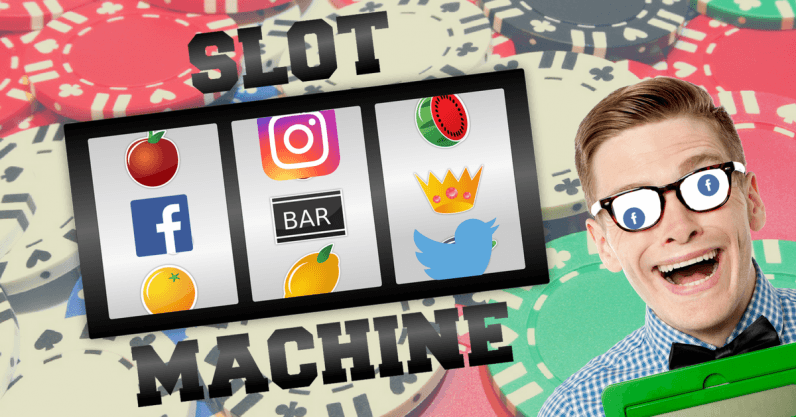
Slot machines are the most profitable part of any casino. Why? Because they’re designed to be addictive. When users play with slot machines, they’re risking their own money, and if they aren’t careful, they could land in a heap of debt, sometimes without even realizing it; accordingly, slot machines are heavily regulated (usually by state in the United States) to carefully control the odds of payout, and how they can be played. But once a psychological phenomenon is discovered and exploited, it rarely stays in just one place for long. Studying the design and effectiveness of slot machines and other…
This story continues at The Next Web
from Social Media – The Next Web https://ift.tt/2uhqxkG
via IFTTT
Friday 23 March 2018
Thursday 22 March 2018
What Agencies Can Learn About Relationships From SaaS Customer Success Teams
We all know that attracting new clients is exciting, but fruitful, long-lasting customer and client relationships are where service providers build and solidify their reputations. The building, nurturing and growing of customer engagements should be a primary focus across the B2B spectrum, whether you’re selling software – like Sprout – or services, like our agency partners. While we know there are nuances to every type of service-based engagement, we do think there are three key ideas from the SaaS side that can help set your agency up for healthy, long-term client relationships.
Give the Onboarding Process Some Love
At Sprout we have a carefully crafted onboarding experience for our new customers so they have not only the best possible understanding of the software they just bought, but also a clear picture of the services, resources and people available to them to ensure their ongoing success. This focus on the “honeymoon” period of our customer relationships builds trust, establishes boundaries and sets both parties up to get the most out of the union.
Any effective onboarding process should start with asking a lot of questions. Try to understand the expectations that lie beyond the scope of work – nuanced relationship expectations like what types of meetings can be handled over the phone and how quickly the client expects responses during off hours. Setting expectations up front and developing a plan for handling when those expectations aren’t met will help build trust. Transparency from the beginning will help you forcast any issues and ensure that your ways of working together are complimentary.
Evolve From ‘Client Service’ to ‘Client Success’
Contrary to popular agency mythology, no individual person owns the relationship with the client. Building that connection should be part of every interaction anyone from your agency has with the client team, because a deep relationship is about far more than their satisfaction with the services you’re providing. It’s about making sure they feel a holistic, emotional connection to your people, your work and the value you provide. If ‘client service’ is focused on the health of the work, ‘client success’ is focused on the health of the relationship. Which means that even if the work needs improvement, there is a vested interest on both sides in getting it right because the human-to-human foundation of the client-agency partnership is solid.
So how can you evolve from a focus on client service to a focus on client success?
Identify each client’s work style: As you get to know your client, determine their personal style for learning and processing information. Pay attention to how they respond to different types of information and communication styles so you can tailor your interactions to fit their needs.
Hold their hands: Go the extra mile. Never just answer the client’s question—always try understand why they are asking and give them more. Every single interaction you have with a client is an opportunity to understand how your relationship is and have a barometer for where things stands.
Be realistic: About your and your client’s capacity. Be choiceful about communications; make sure you’re delivering the client what they need, not just information for the sake of information.
Be human: Let your personality into your communication style and tone. Being a real person makes it easier to forge the types of client relationships that feel like you’re playing on the same team and sharing the same goal: The client’s success and well being.
Surprise and delight: Find little moments that can make your client smile. This isn’t about wining and dining. This is random acts of kindness, handwritten notes and other meaningful ways of recognizing the milestones that matter to them – both personally and professionally.
The Biggest Advantage of Client Success: Retention
Dedicating a deep, symbiotic relationship with your clients goes beyond making all parties feel the warm fuzzies. Investing in human-centric processes like a discovery-minded onboarding and a client management model that prioritizes their success can pay off for all agency models, because the lifetime value of an existing client is far greater than the cost of acquisition. In fact, it costs five times more to attract a new customer than it does to retain an existing customer, yet only 30% of agencies reported having an equal focus on acquisition and retention.
So don’t be afraid to rethink your priorities to make sure you’re dedicating at least as much energy and resources to strengthening your current client relationships as you are to pursuing new clients. Remember, their success is central to your success and happy agency clients – much like our happy software customers – can be some of your most vocal references on the open market. So start strong with onboarding and stay strong with a success-minded approach to client service.
As AdWeek puts it, “Design your company—and the relationship with clients—to be something people can grow into, instead of grow out of.”
This post What Agencies Can Learn About Relationships From SaaS Customer Success Teams originally appeared on Sprout Social.
from Sprout Social http://ift.tt/2GguMSs
via IFTTT
Wednesday 21 March 2018
Instagram now lets you link to hashtags and other profiles in your bio
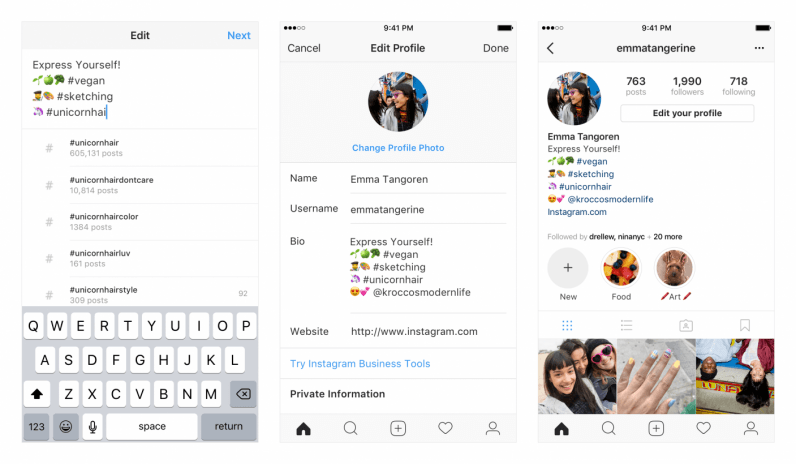
Your social media bios are where you introduce yourself to the world, and Instagram gives you a canvas of 150 characters to accomplish this. Until very recently, this was a bit of a gilded cage. Instagram restricted users to mere text, emoji, and hyperlinks, and it wasn’t possible to link to hashtags and other profiles. That’s changed. Now, when you edit your profile and include a hashtag, Instagram will automatically turn it into a clickable hyperlink. It’ll also suggest popular and trending hashtags as you type. You can also link to profiles without including the “http://instagram.com/” bit. As you would…
This story continues at The Next Web
from Social Media – The Next Web http://ift.tt/2HTSMb0
via IFTTT
From copycat to Goliath: A deep dive into China’s massive WeChat
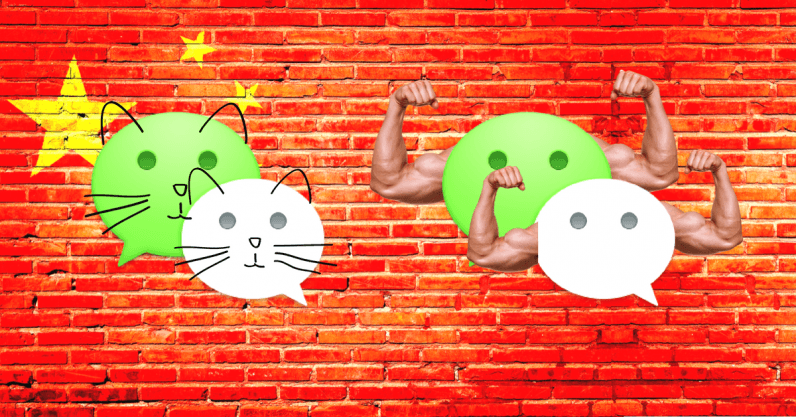
China has long been perceived as a “nation of copycats,” where the shanzhai mentality reigned supreme, but, while pirating still goes on there, China has already moved on to the next phase of its development. The same has happened with WeChat. What started out as a Chinese copy of Whatsapp has evolved into something much bigger and far more powerful. WeChat started out as a very basic messaging app. Friends texting friends. That’s about it. Then it added phone calling and video calling capabilities. Then, it began to expand into areas that had previously not been associated with simple messaging…
This story continues at The Next Web
from Social Media – The Next Web http://ift.tt/2pxz9ho
via IFTTT
Tuesday 20 March 2018
Facebook isn’t a company. It’s a country that needs to be sanctioned

It’s hard to imagine Mark Zuckerberg or Sheryl Sandberg wearing a black eyepatch and stroking a cat while overseeing the covert operation to overthrow America’s government. The people at Facebook, for all their flaws, don’t seem like the villains in a James Bond movie. And, for what it’s worth, they may very well have our best interests in mind. Who knows? But Facebook isn’t people, it’s more akin to a country, and a large one at that with over two billion citizens. It wasn’t always a country. The social network was driven first by Zuckerberg’s ego, then briefly by the…
This story continues at The Next Web
Or just read more coverage about: Facebook
from Social Media – The Next Web http://ift.tt/2psdRTt
via IFTTT
A museum banned Instagram selfies. Here’s why it won’t work.

The earth-shattering popularity of Instagram and its galaxy of stars (or would-be stars) is having a ripple effect on certain industries — for good and, sometimes, for ill. Museums and other places are taking measures to cut down on damages caused by the photo-snapping masses, but there doesn’t seem to be a single solution. One museum in San Francisco, the de Young Fine Arts Museum, instituted photo-free hours during a recent exhibit. According to TIME, this was a compromise for those who wanted to take photos of the exhibit, and those who felt the clusters of amateur photographers were ruining the scenery.…
This story continues at The Next Web
Or just read more coverage about: Instagram
from Social Media – The Next Web http://ift.tt/2u81UqA
via IFTTT
Twitter needs a different approach to news if it doesn’t want to end up like Facebook
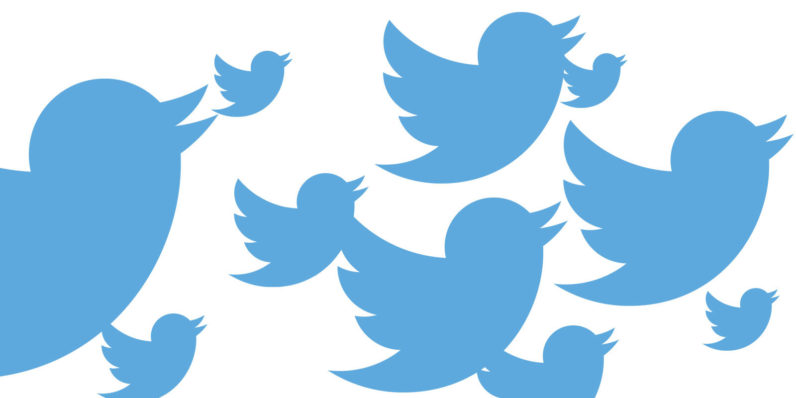
Twitter and Facebook are evolving their approach to news, and have started to become the opposite of their former selves. Where Facebook is trying to shed its association with news, Twitter is building it into its platform — but it’ll need to avoid Facebook’s problems with fake news. Facebook, whether it likes it or not, has become a source of news for many. A 2017 Pew study revealed that Facebook was far and away the site people are most likely to turn to when they want news, at least among its social media peers. Meanwhile, Twitter has emerged as Facebook’s…
This story continues at The Next Web
Or just read more coverage about: Facebook,Twitter
from Social Media – The Next Web http://ift.tt/2IGID2Y
via IFTTT
Study reveals Reddit isn’t as big a cesspool as you thought. But it’s still a cesspool.

A recent study by Stanford University revealed the vast majority of Reddit’s conflicts originate in just one percent of its communities. Subreddits, as they’re known on the site, are category-specific groups that steer the conversation around a central topic or theme. And most are relatively tame. These are the groups responsible for thoughtful discourse and mostly respectful debate, the behavior that keeps most users engaged and active on the site. Others, however, are easily some of the most toxic corners of the web, online cesspools that serve as a watering hole for the modern criminals, racists, and conspiracy theorists hell-bent…
This story continues at The Next Web
Or just read more coverage about: Reddit
from Social Media – The Next Web http://ift.tt/2IGjfdG
via IFTTT
Monday 19 March 2018
Got questions for the Mark Zuckerberg of farming? Wefarm’s Kenny Ewan is joining us on TNW Answers

What are the most pressing problems farmers face today, and how can a peer-to-peer network solve them? What can a farmer in Peru learn from one in Kenya? What potential does emerging technologies like machine learning and the blockchain have for improving the global farming industry? Ask all this and more to digital farming czar, Kenny Ewan. Ewan is the Founder & CEO of Wefarm, the world’s largest farmer-to-farmer digital network. It connects farmers via free SMS to Wefarm’s 660,000 farmer-strong global online network, where others can respond with useful, crowd-sourced knowledge. There are 500 million smallholder farmers in the world, and…
This story continues at The Next Web
from Social Media – The Next Web http://ift.tt/2HInwvJ
via IFTTT
Friday 16 March 2018
Thursday 15 March 2018
Reddit’s massive shoplifting sub has thus far evaded the banhammer
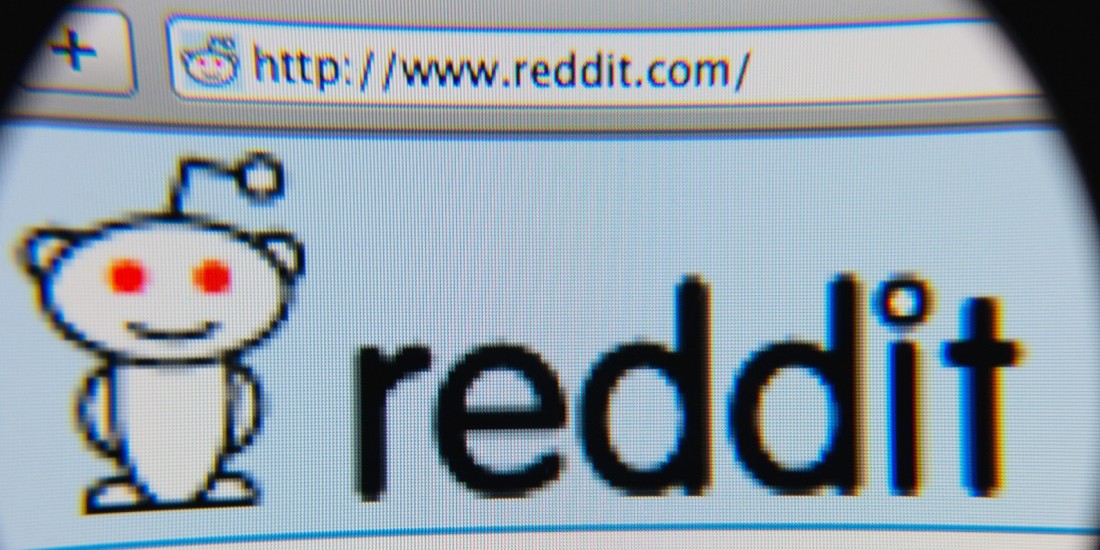
When you get deep enough into Reddit, you inevitably stumble across something you didn’t know existed — or could exist. Case in point: r/shoplifting, an active subreddit where Redditors talk about exactly what the name suggests. At over 80,000 subscribers, it’s a relatively large community, and they aren’t shy about their intentions. The subreddit’s raison d’être is to talk about stealing stuff, ways of stealing stuff, and places to go where you may most easily steal stuff. They’re very careful to specify that they aren’t ‘fessing up to anything … until they do, naturally. Here are Reddit’s content policy, regarding “unwelcome…
This story continues at The Next Web
Or just read more coverage about: Reddit
from Social Media – The Next Web http://ift.tt/2tQwfK6
via IFTTT
Wednesday 14 March 2018
Facebook bans far-right hate group Britain First

Facebook has announced it has permanently deleted the accounts of the far-right extremist group Britain First, and its leaders, Paul Golding and Jayda Fransen. Britain First are perhaps one of the most controversial elements in British politics. Although the party has never known success at the ballot box, it’s boasted the one of the largest social media reaches of any British political institution. They became known for their inflammatory, emotionally-provocative, often ALL-CAPS posts, which pushed an unashamedly anti-Islam, anti-immigration, and eurosceptic perspective. In a blog post published earlier today titled “Taking action against Britain First,” the company elaborated on its…
This story continues at The Next Web
Or just read more coverage about: Facebook
from Social Media – The Next Web http://ift.tt/2tMj78T
via IFTTT
Tuesday 13 March 2018
New in AWeber: One-Click Automation and Segmentation

Powerful automation with a single click
AWeber continues to bring you advanced automation features that are so easy-to-use, we’re hesitant to even call them advanced. 🤖 You can automate and segment like a pro without the hefty costs and clunky interfaces that other all-in-one tools might offer. Here’s how it works, technically:- You send an email containing one or more links.
- When a subscriber clicks a link, you can then tag that subscriber with one or more unique tags.
- Use those tags to create subscriber segments, OR to kick off an automated sequence of emails using Campaigns. (Or both. Tags are super powerful.)
- You’re listening to your subscribers and tagging them based on their behavior.
- You’re sending your subscribers more relevant and valuable emails based on these tags.
- You’re developing stronger relationships with your audience, transforming prospects into paying customers, and paying customers into loyal advocates.
- Automatically send additional information or content without requiring your subscribers to opt-in again or join a new list.
- Send one-time broadcasts to subscribers based on their interests, or exclude subscribers who don’t want to hear about certain topics or products.
- Avoid managing a ton of lists just to segment your audience! Using tags, it is possible to power your email marketing campaigns from a single list in AWeber.
Segment your subscribers with ease
One of the most common use cases for segmentation is to group your subscribers by interest. Here’s a sample email you could send today using AWeber.
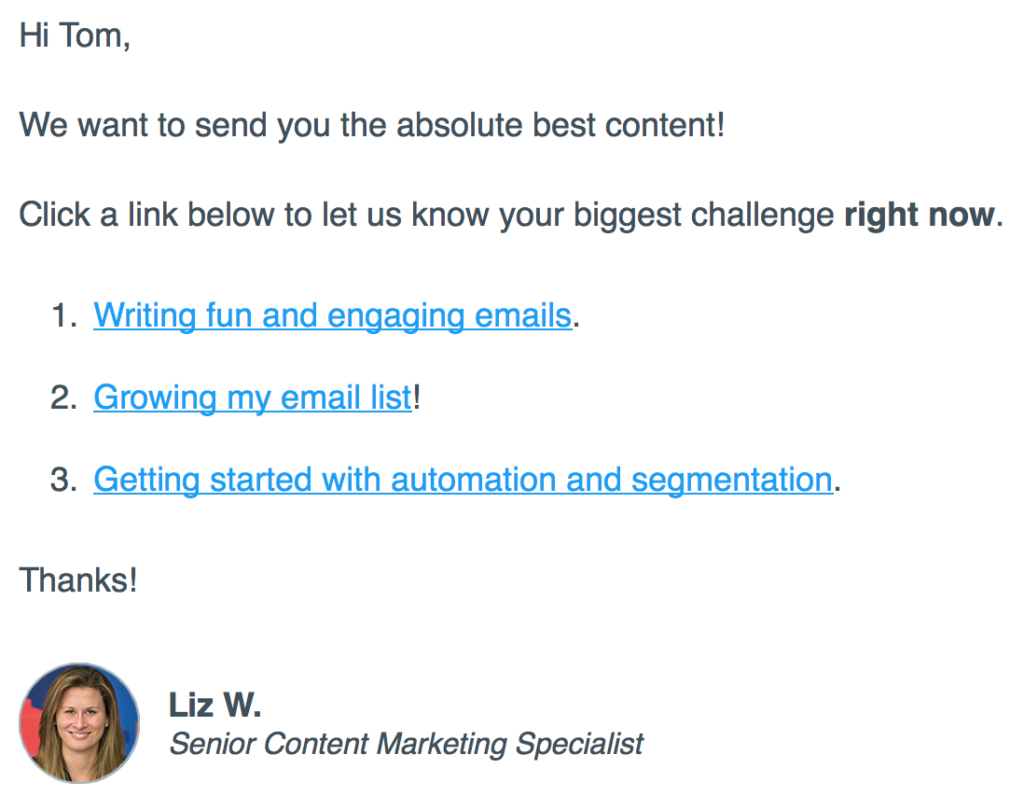 If a subscriber clicks the first link, tag them “writingtips”. If a subscriber clicks the second link, tag them “listgrowth”. Or, if a subscriber clicks the third link, tag them “advancedtopics”. It’s that easy. Here’s a quick video on creating the segments:
If a subscriber clicks the first link, tag them “writingtips”. If a subscriber clicks the second link, tag them “listgrowth”. Or, if a subscriber clicks the third link, tag them “advancedtopics”. It’s that easy. Here’s a quick video on creating the segments:
Now, when you have a launch that’s perfect for people who want to hear about writing tips, you can send it to just them. If there’s a promotion for people who want to automate their business. You got it, send it to them. Something relevant for everyone? You can still email the entire list.
Trigger an automated campaign with just one click
Let’s say you put together a great automated sequence of emails using Campaigns. This sequence might be an educational email course, or a pre-launch for a specific product or service. Maybe not everyone wants that extra content. With one-click automation, you can let subscribers decide and begin receiving your awesome content with a single click. Here’s what the email could look like:
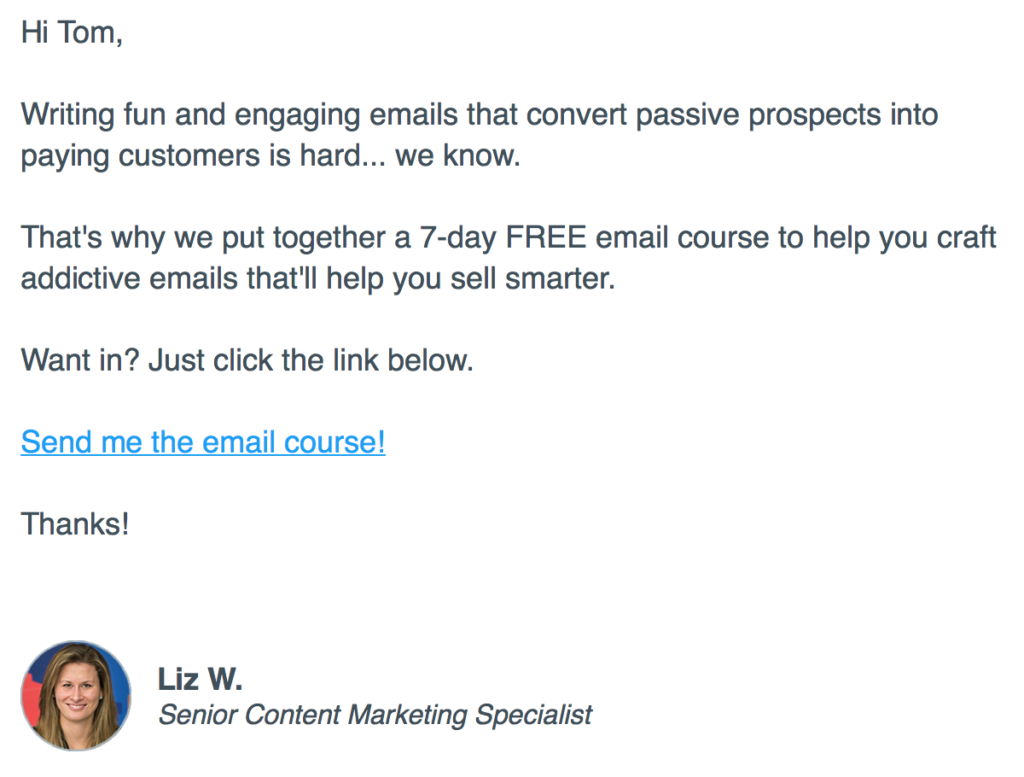 When a subscriber clicks “Send me the email course!” you can apply a tag that triggers the automated course to begin. Here’s how to set up that campaign:
When a subscriber clicks “Send me the email course!” you can apply a tag that triggers the automated course to begin. Here’s how to set up that campaign:
For more info on creating campaigns, check out our Knowledge Base article or contact us by phone, email, or live chat.
How to set this up in AWeber
Setting up one-click automation and segmentation in AWeber is simple. When scheduling your broadcast to be sent, you’ll find a new option: “Do you want click automations?” Click Edit and you’ll find a list of links from your email.
Click Edit and you’ll find a list of links from your email. 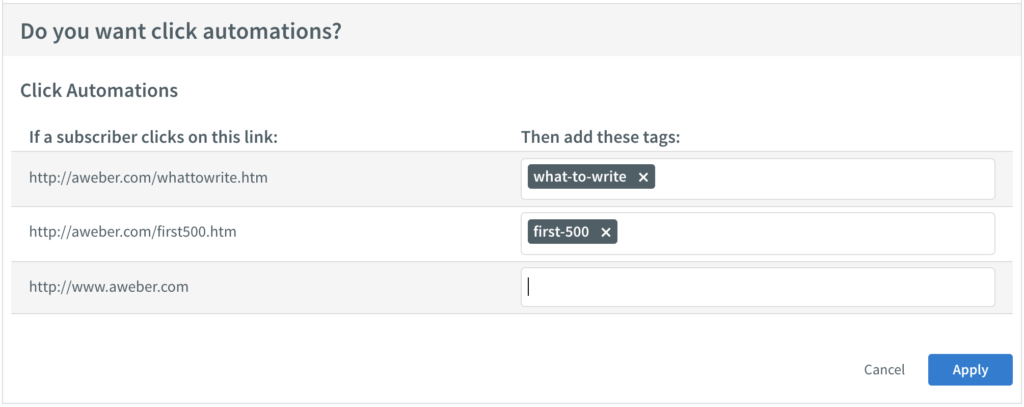 Add your tags, click apply. It’s that easy.
Add your tags, click apply. It’s that easy.
Join an upcoming live training to learn more
Ready to segment your subscribers and kick off automations with a single click?Secure your seat in a live training. We’ll go through how this new feature works, when and why you might want to utilize it, and how it could greatly impact your business and revenue. Choose from two different times: Tuesday, March 27 at 11 AM (EST) or 3 PM (EST). Can’t attend live? Sign up anyways and we’ll send over a recording! Don’t wait to get started. If you have additional questions – leave a comment below, or contact our live customer solutions team. Not an AWeber customer? Tired of fiddling with complex automation builders? Try AWeber free for 30 days. You’ll get access to these new features and our team of email experts.
The post New in AWeber: One-Click Automation and Segmentation appeared first on Email Marketing Tips.
from Email Marketing Tips http://ift.tt/2p9ufHk
via IFTTT
Monday 12 March 2018
Here’s how you access the super creepy data Facebook has on you

Since 2010, Facebook allows you to download an archive file of all your interactions with the network. It’s a 5-click easy process that your grandmother can do (more details below). Inside the .zip, lies an ‘index.html’ page that acts as a portal to your personal data. Visually, it looks like an ad-free stripped down version of Facebook that’s actually quite relaxing. As I’m trying to reduce my exposure to social networks, I decided to take a look at this info. By extrapolating the data of a single individual (me), I might be able to better apprehend the capabilities of the beast.…
This story continues at The Next Web
Or just read more coverage about: Facebook
from Social Media – The Next Web http://ift.tt/2p7hL2R
via IFTTT
Saturday 10 March 2018
To ensure stability, Facebook will “help” Nigeria with its upcoming general elections

Facebook will be helping Nigeria with its upcoming 2019 presidential elections. This comes after a team from Facebook, led by Ebele Okobi (Facebook’s Public Policy Director for Afrika) visited and met with Nigeria’s Independent National Electoral Commission (INEC) to explore various ways in which they could work together on voter education and engaging citizens ahead of the 2019 elections. The 2019 Nigerian general elections are scheduled to take place on 16 February 2019. The initiative is not going to be the first time that Facebook has been involved directly with elections on the continent. In 2017, the social media company ran some voter…
This story continues at The Next Web
from Social Media – The Next Web http://ift.tt/2GcySsq
via IFTTT